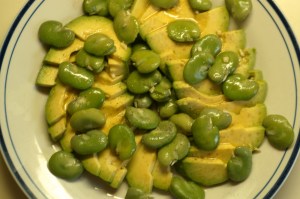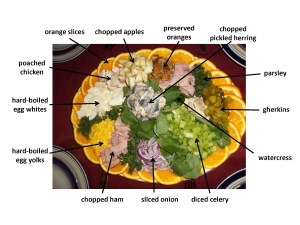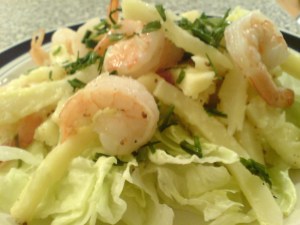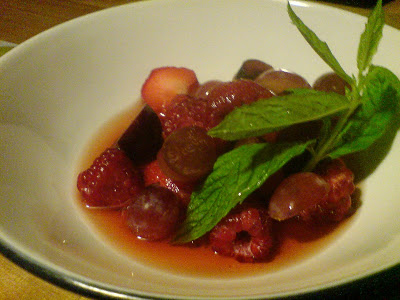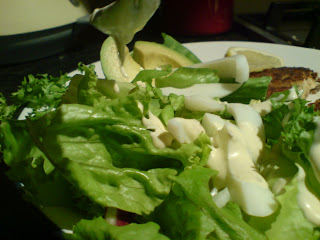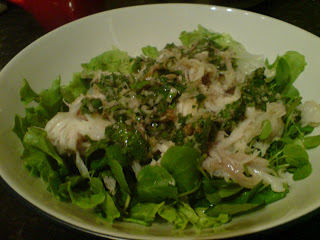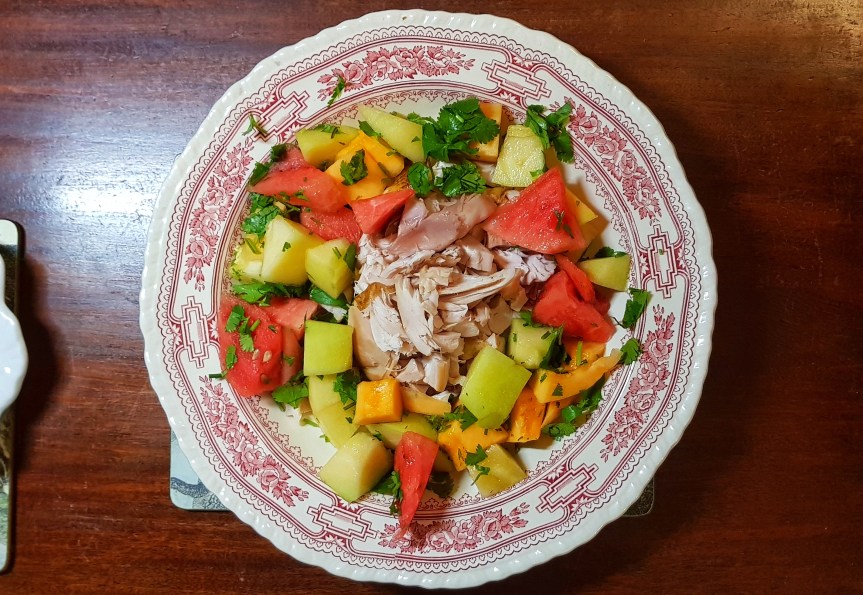
When I first leafed through my (original) copy of Jane Grigson’s English Food, I would never have expected this recipe to cause me much bother. The problem here is Jane’s insistence on a particular type of smoked chicken. This recipe calls for a cold-smoked chicken, which then gets roasted, cooled and then sliced up. The alternative option, of course, is to simply buy a hot-smoked chicken and allow it to cool, a product available in almost every supermarket in the country. However, these chickens have ‘flabby’ flesh and do not make for good eating apparently. According to Jane, cold-smoked chickens are much superior but ‘more difficult to find’.1 No, they are impossible to find. I’ve looked and looked, and I have never found one. Therefore, I had to resort to cold-smoking one myself, something made possible by the fact I now own my own little cold-smoker, which I used last post to make my own smoked bacon.
There is scant information on how one should go about such an endeavour; I think it is considered dangerous, but this isn’t smoked salmon and I will be cooking the beast. Eventually I did find some guidance in smoking and appropriately curing poultry in Keith Erlandson’s very handy little book Home Curing and Smoking.2
To cure and smoke the chicken:
As suggested in Erlandson’s book I made up a strong brine solution:
3 L cold water
800 g sea salt
160 g soft dark brown sugar
5 bay leaves
1 tsp cracked black peppercorns
Bunch of thyme
1 roasting chicken
Pour the water into a large pan with the other ingredients except the chicken. Put over a medium-high heat and stir to dissolve the salt and sugar, bring to a simmer and let it tick away for 10 minutes before turning off the heat and allowing it to cool down.
Prick the chicken breasts and legs with a fork to aid penetration of the brine and place it in a closely-fitting tub (I used a 4 L ice cream tub). Pour in the brine, placing an appropriate ramekin or similar between bird and lid to keep it immersed in the brine and leave for 6 hours.

Remove the chicken from the brine and pat dry, then leave to air day for a couple of hours; I sat mine on its bottom so that the cavity could drip dry.
When it is dry to the touch, cold-smoke your chicken for anything between 8 hours and 4 days. I went for the former, using my ProQ Eco Smoker (see previous post on how to use one).
Once smoked, the chicken needs to be cooked – either by roasting (see below) or a two-hour hot smoking, should you have access to a cold-smoking device.

To roast the chicken:
This is what Jane tells us to do: “Rub the chicken over with salt and pepper, roast in the manner you prefer, basting with the sherry.”
To roast the chicken, I followed my usual method. I have written about my method of roasting a chicken on my other blog, so I shan’t repeat myself. The only difference being that I didn’t put butter under the breasts, just over them, and the legs. I used about 50 g, then seasoned it and basted it with 6 tablespoons of dry sherry after 40 minutes and then every 30 minutes thereafter.
Then, ‘[r]emove the bird and allow to cool. Skim as much fat as possible from the juices [I found there were barely any juices so and I had to add a little hot water to dissolve the delicious dried juice deposits], pour the rest into a glass and leave to cool. When the chicken is cold, cut away the meat and slice it up.’
To make the salad:
Take your melons – I went for cantaloupe, Galia and watermelon – halve, deseed and cut into wedges, cut away the rind and dice into large chunks and place in a bowl. I didn’t bother deseeding the watermelon, as the seeds don’t really bother me and life’s too short. I only used half each of the cantaloupe and Galia melons and a quarter of a watermelon. Then ‘arrang[e] them on a large shallow dish, with the sliced chicken.’
Now make the dressing: Check the reserved roasting juices and remove any fat. It should be very concentrated, but if not, boil it down and reduce further. Whisk in 3 tablespoons of hazelnut oil and 5 tablespoons of sunflower oil (or if you can’t get hazelnut oil, use 8 tablespoons of olive oil only), then sharpen it with either cider vinegar or lemon juice. Jane doesn’t say how much to use, so do it to your tastes. I used vinegar and added 2 tablespoons. Taste and check the seasoning and sharpness and adjust accordingly.
Pour the dressing over the melon and chicken, but don’t swamp them, keep any remainder of it in a separate jug if anyone wants more. Lastly, sprinkle over the chopped leaves of a small bunch of coriander and serve.

#442 Smoked Chicken with Three-Melon Salad. This was a very 1970s-looking dish, and I am not sure the combination worked particularly well. However, the chicken itself was absolutely delicious and next time I use my smoker, I will certainly brine another chicken to pop in there. The meat was close textured, rather like a tender ham, and it melted in the mouth. The melon salad, too, was delicious, I liked the hazelnut dressing. Though whole thing lacked texture and the addition of some chopped roasted hazelnuts would have been an improvement. If they were served in separate courses; melon salad as a starter and the chicken as a main, I would be giving high scores, but taking it as a dish in itself the two jarred a little for me. Still, worth a good score because of the revelation that is roasted cold-smoked chicken! 7.5/10.
References
1. Grigson, J. English Food. (Third Edition, Penguin, 1992).
2. Erlandson, K. Home Smoking and Curing. (Ebury Press, 1977).



